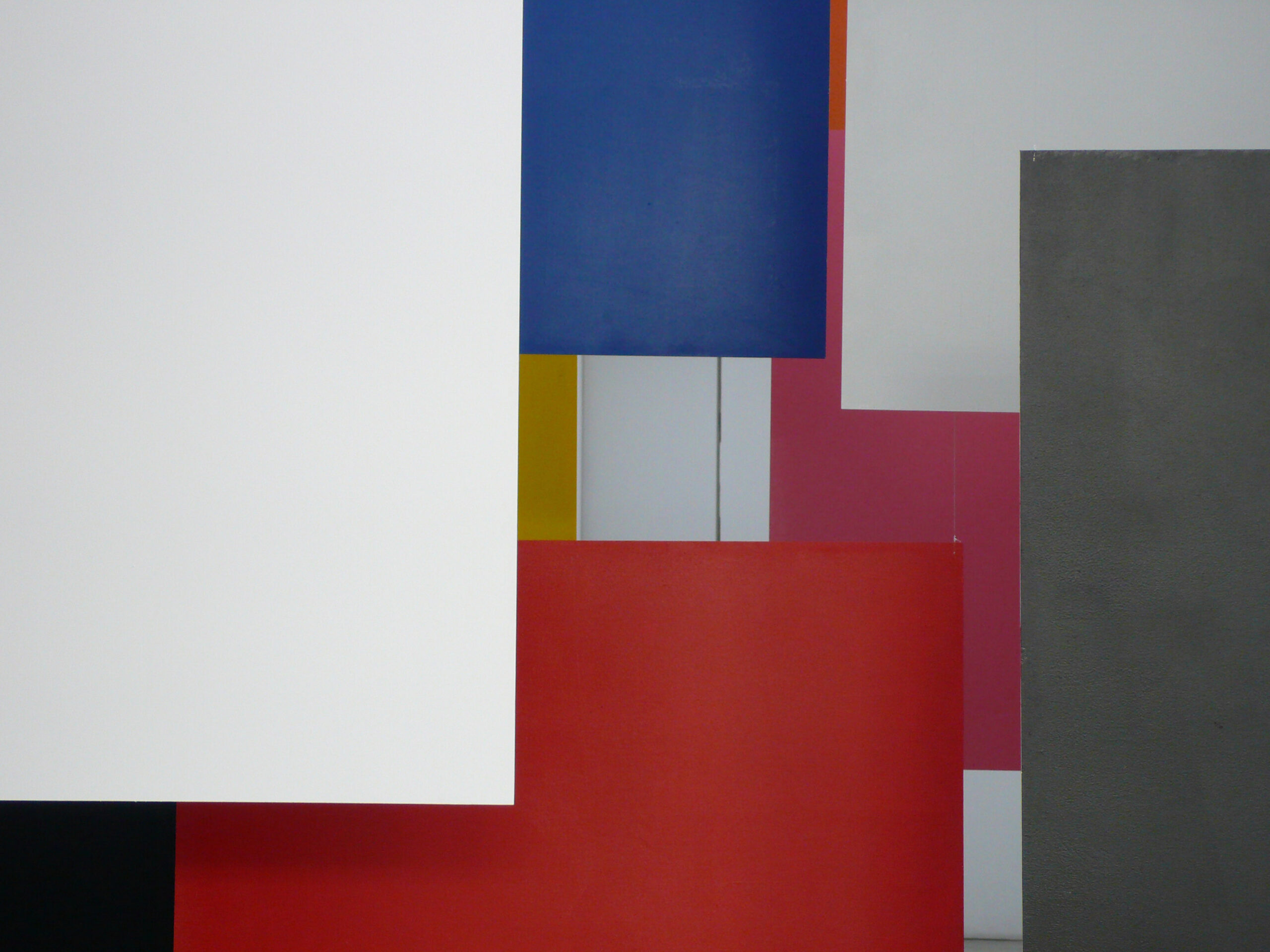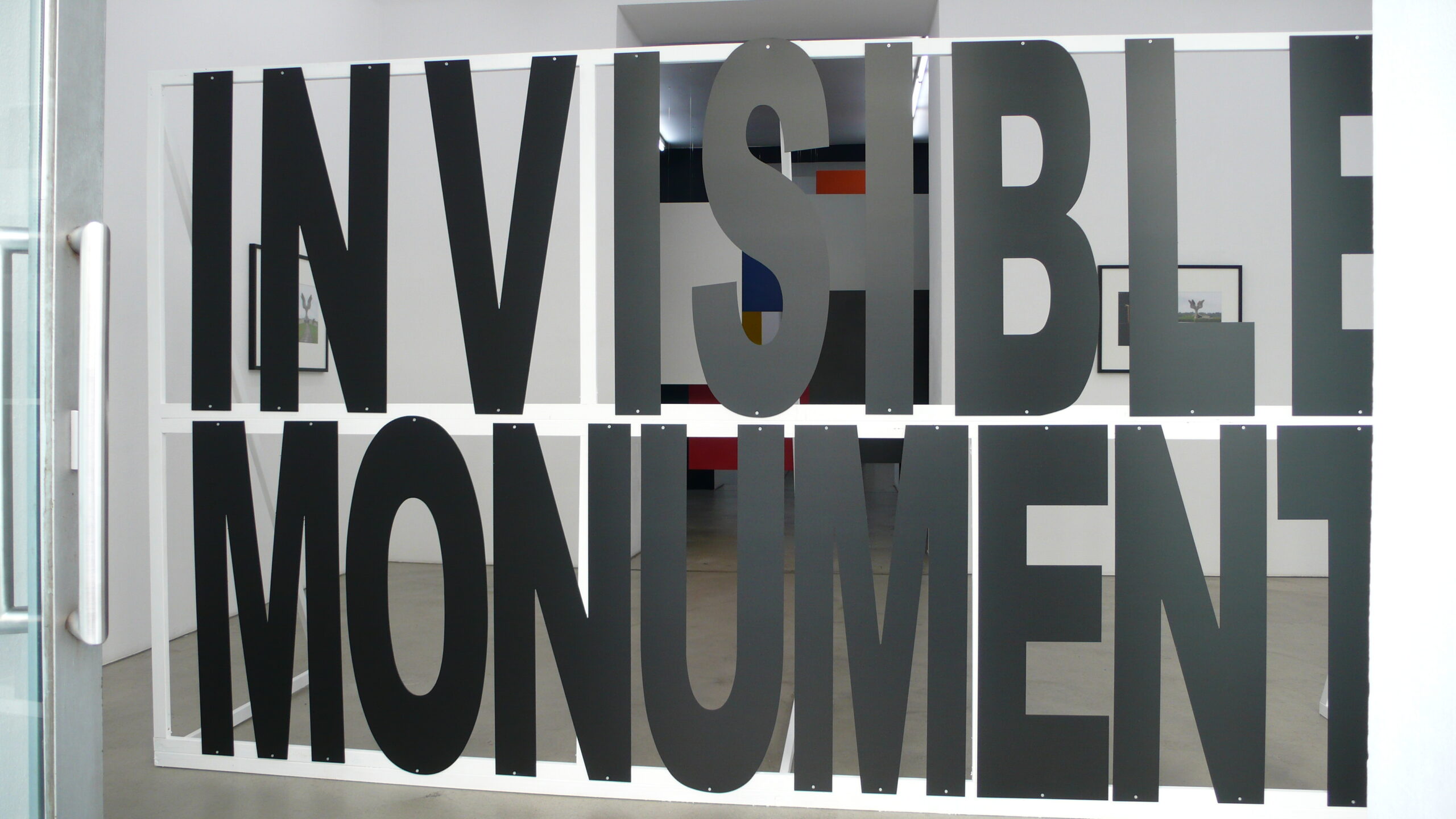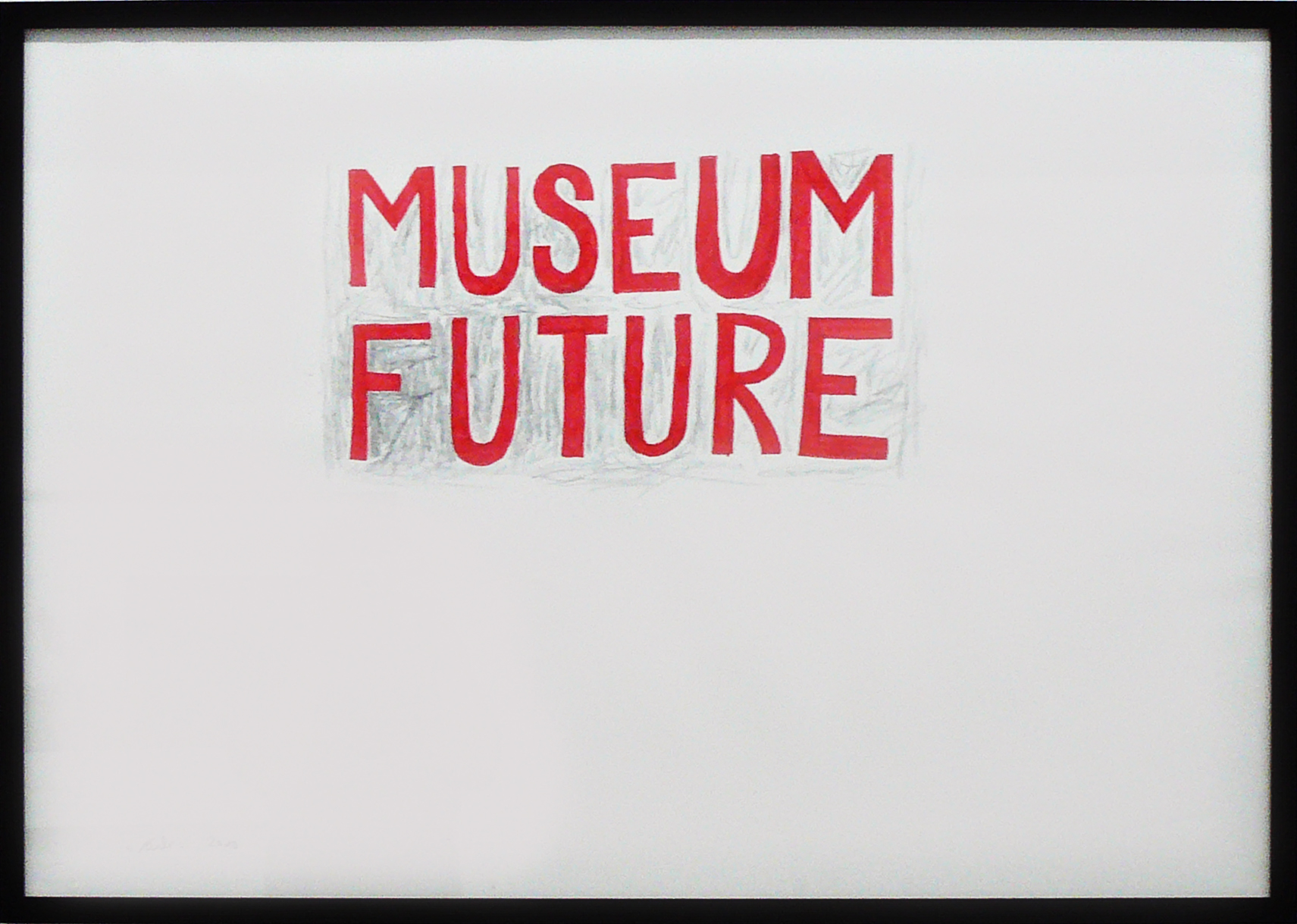
Marko Lulić, der sich seit Jahren mit der Auslotung und Hinterfragung des Themas Denkmal beschäftigt präsentiert diesen September neue Arbeiten in der Gabriele Senn Galerie.
Bei dem Künstler, der vor allem in den Bereichen Objekt, Video und Installation arbeitet, spielt der Körper immer eine bedeutende Rolle. Speziell in den letzten Arbeiten und Ausstellungen ist der Körper in Form der Gegenüberstellung von Monument und Bewegung als Thema präsent.
In Space-Girl Dance 2009 ließ er eine Gruppe von drei TänzerInnen vor einer Skulpturenkulisse in Rottweil tanzen – eine Choreographie, die einem Raquel Welch Clip aus den Siebzigern entnommen war. In anderen Arbeiten der letzten Jahre setzte er auch immer wieder sich selber als Performer ein, in Fotos oder Videos, entweder Nikola Tesla’s Elektro Performances nachstellend oder in Reactivation (Circulation in Space) sich an der Moderne buchstäblich und schwitzend abarbeitend, indem er in die kinetisch anmutende Skulptur von Vojin Bakic stieg und auf ihr herumturnte, den Originaltitel der Arbeit Circulation in Space (1971) wortwörtlich nehmend.
Die genannten Projekte führen uns zur Rolle der Sprache in Lulićs Arbeit. Text wird von ihm nicht nur für die oft ironisierenden Titel verwendet, sondern in seinen Schriftskulpturen selbst regelmäßig zum Objekt.
In der Ausstellung Untitled Concrete, ironisiert er nicht nur die eigenen Titel, sondern spielt auch mit der Doppelbedeutung (concrete – Beton, concrete – konkret). Beton ist nicht nur ein Material modernistischer Architekturen und Denkmäler, sondern auch ein Begriff, der schon in Lulićs Arbeit auftauchte – zum Beispiel in Durch weichen Beton, Grazer Kunstverein. Das Hinterfragen der Geste des Denkmals, sowie der Materialien und der Ideologien, die hinter Ihnen stehen, ist eine Arbeitsweise, die immer wieder in Lulićs Werk auftaucht – u.a. Amerikanische Baumaterialien, Total Living, Pressspanplatten für den Frieden.
Lulić präsentiert in Untitled Concrete neue Arbeiten, die die Themen Denkmal, Bewegung und Bedeutung erneut verflechten.
Er zeigt zwei größere Installationen: eine Schriftskulptur, die absichtlich mit Widersprüchen spielend, mit den Begriffen Unsichtbarkeit und Monumentalität arbeitet, sowie eine Raumkonstruktion, die sowohl als konstruktivistisches Mobile als auch als Display oder Bühnenbild für Performances gelesen werden kann.
Der Künstler verwendet diese Installation auch als Bühne für eines der zwei neuen Videos, die er präsentiert. In beiden Videos gehen TänzerInnen einen Dialog mit dem Raum beziehungsweise einem Monument ein. Jasenovac, die zweite Videoarbeit, die im selben Monat auch im österreichischen Kulturforum in New York zu sehen sein wird, referiert auf das von Bogdan Bogdanović entworfene Denkmal in Jasenovac, Kroatien, das Teil der Gedenkstätte des größten kroatischen Konzentrationslagers im Zweiten Weltkrieg ist. Ein Werk, auf das Lulić schon öfter in seiner Arbeit Bezug genommen hat – somit stellt die Videoarbeit Jasenovac auch einen Bogen zur Ausstellung Organisiertes Dekor – Verbesserte Partisanendenkmäler in der Gabriele Senn Galerie 2001 her.

Marko Lulić
ohne Titel (Invisible Monument) / Untitled (Invisible Monument), 2010
Holz, Lack, PVC / wood, paint, PVC
200 x 365 x 100 cm
Marko Lulić, who for years has made exploring and questioning the theme of monuments the subject of his work, presents new work this September at the Gabriele Senn Galerie.
For the artist, who works primarily in the areas of object art, video and installation, the body always assumes an important role. Particularly in the most recent work and exhibitions, the body in the form of a juxtaposition of monument and movement is a primary theme.
In Space-Girl Dance 2009, Lulić has a group of three dancers perform in front of a backdrop of sculptures in Rottweil; the choreography is taken from a Raquel Welch film from the seventies. In other work of recent years he often appears as a performer himself, in photos or videos, either reenacting Nikola Tesla’s electrical performances or, in Reactivation (Circulation in Space), literally and sweatily belaboring Modernism by climbing a seemingly kinetic sculpture by Vojin Bakic and swinging himself about, a verbatim interpretation of the piece’s original title, Circulation in Space (1971).
These projects lead us to the role of language in Lulić’s work. The written word finds use not only in his often ironic titles; it also regularly features as the object itself in his text sculptures.
In the exhibition Untitled Concrete, Lulić not only reflects ironically on his own titles, he also plays with the dual meaning (concrete, the material, and concrete in the sense of specific). Concrete is not only the material of modernist architecture and monuments, but also a reference that has appeared previously in Lulić’s work, for example in Durch weichen Beton (Through Soft Concrete), Grazer Kunstverein. The questioning of monumental gestures, as well as the materials and the ideologies behind them, is an approach that occurs repeatedly in Lulić’s work, such as in Amerikanische Baumaterialien (American Building Materials), Total Living, Pressspanplatten für den Frieden (Particleboard for Peace).
In Untitled Concrete, Lulić presents new work that once again interweaves the themes of monument, movement and meaning. On view are two large-scale installations: a text sculpture that deliberately plays with contradictions, with the terms invisibility and monumentality, and a spatial structure that can be read both as a constructivist mobile as well as a display or set design for performances.
The artist additionally uses this installation as a stage for the shooting of one of two new videos. In both videos, dancers engage in a dialogue with the space or with a monument. Jasenovac, the second video work, which will be on display in the same month at the Austrian Cultural Forum in New York, refers to the monument designed by Bogdan Bogdanović in Jasenovac, Croatia, part of the memorial to the largest concentration camp in Croatia during the Second World War. Lulić has often referred to this piece in his work; the video Jasenovac thus forms a bridge to the exhibition Organisiertes Dekor – Verbesserte Partisanendenkmäler (Organized Decor – Improved Partisan Monuments) at Gabriele Senn Galerie in 2001.

